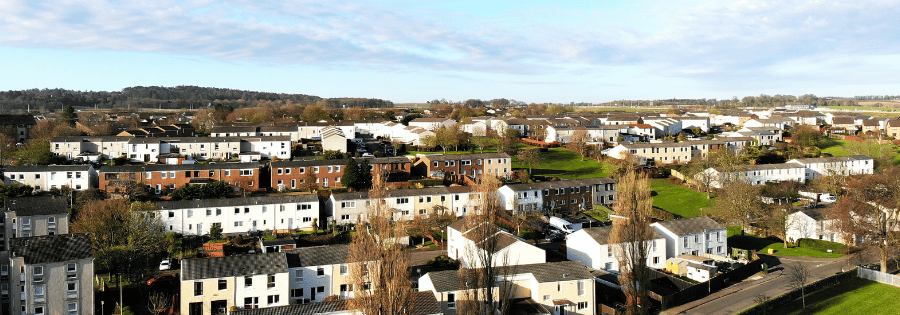How can social housing providers respond to the risk of racist violence and disorder in their communities?

Ursula Aitchison, a CharityWorks graduate and policy strategy and research specialist at Chelmer Housing Partnership, reports on her inquiry into housing association responses to racist violence.
The racist riots that broke out across the country in August 2024 represented the most extreme and widespread racist violence and disorder in the UK for decades. Since then, we’ve seen continued targeting of asylum seekers’ accommodation, the largest far-right protest in British history, and on Yom Kippur, the horrific attack on a Manchester synagogue. Communities across the UK are living in fear of the next outbreak of violence.
Within the social housing sector, there’s growing recognition that issues of inter-community division, racist violence and disorder are not going away, and that providers have a responsibility to engage.
In spring 2025, I carried out a small research project (as part of my CharityWorks graduate scheme) into how housing associations should respond to the future threat of racist violence and disorder among the communities they serve. My aim was to document good practice and consider how it might best be transferred to different contexts. I reviewed literature that had been published since the riots and had conversations with housing professionals from across the UK. These responses evidence expertise within the sector that now needs to be embedded throughout it.
Crisis responses
I documented the emergency response of four housing associations: Calico Homes, Manningham, Arawak Walton and Poplar HARCA. Their responses followed a similar pattern: establish the facts; identify risks (to employees, residents, offices and community spaces); take mitigating actions and communicate to provide reassurance.
Measures looked different for each organisation. For example, while Manningham chose to close its offices and limit outside working, Calico, concerned that closing offices could draw further unwanted attention after online threats, chose to remain open with additional safety measures.
I analysed responses thematically in the context of the housing associations’ size, location and long-term work on cohesion and inclusion, to understand factors that influenced or facilitated their response. This revealed that their responses relied heavily on employees’ confidence to engage in difficult conversations involving race, strong community networks and partnerships to gather information, and clear leadership, decision-making and coordination.
For example, at Spotlight, Poplar HARCA’s youth service, there was some concern about youth glamorising violence or making extremist comments. In response, teams reviewed safeguarding processes and shared advice and information so that all staff were ready to engage with difficult conversations rather than avoid them. Poplar HARCA’s employees were also able to rely on an established tension-monitoring group, made up of representatives of different communities and local organisations to monitor developments.
Calico participated in daily briefings with police, council and community partners thanks in part to relationships developed during a two-year community cohesion project called ‘Building Bridges’.
Recommendations
My work led to these suggested actions by social landlords:
- Ensure the risk of failing to respond effectively to the threat of racist violence, disorder and division within communities is included providers’ risk management frameworks, with key concerns and mitigating actions
- Put together a crisis response plan informed by best practice in the sector and identifying key roles and responsibilities
- Connect with existing voluntary and civil society networks in operational areas to form a tension-monitoring group.
These recommendations are intended as first steps that all social housing providers can take to mitigate the immediate risks and to equip their organisations to help create cohesive and resilient communities. They make use of existing structures to ensure streamlined implementation and monitoring
While practices around community cohesion have developed in the sector since the 2011 riots, they have been largely limited to areas that have recovered from particular instances of racist violence and disorder. This has left a majority of providers ill-equipped to respond effectively to these risks in their own communities and the real threats they could pose to residents, employees and property.
It’s now evident that issues of community division, racist violence and disorder are not localised, nor likely to be short-lived. Therefore, building cohesive and resilient communities needs to shift from being the specialism of a few, to being an integral part of good housing practice in the UK.
Thank you to everyone who gave their time to advise and participate in this project. To read the full report please contact Ursula.aitchison@chp.org.uk. Other useful sources include HDN’s Supporting Tenants and Communities and post-roundtable briefing ‘Meaningful action and responding to far-right violence, and the Social Housing Anti-Racism Pledge (SHARP).







